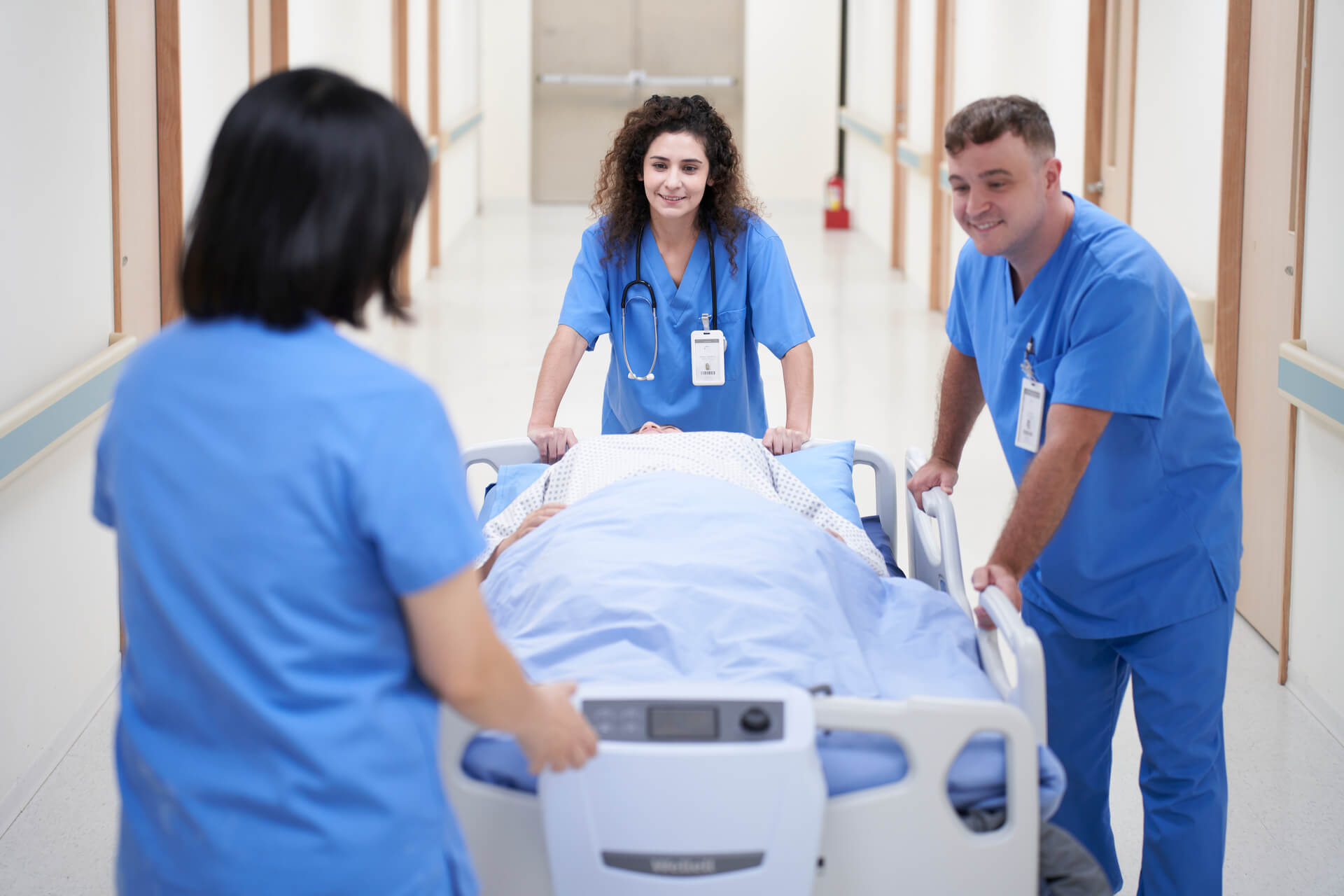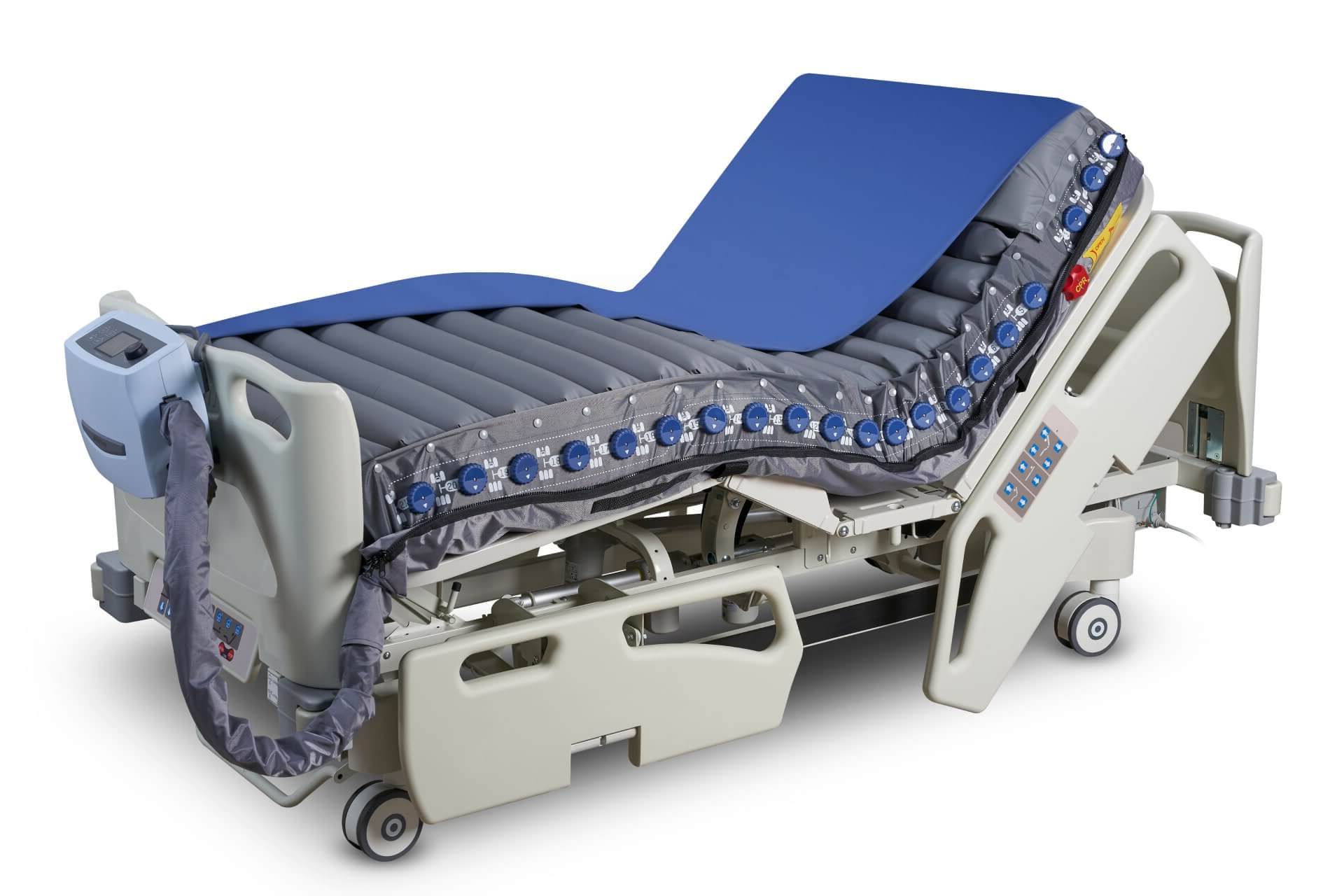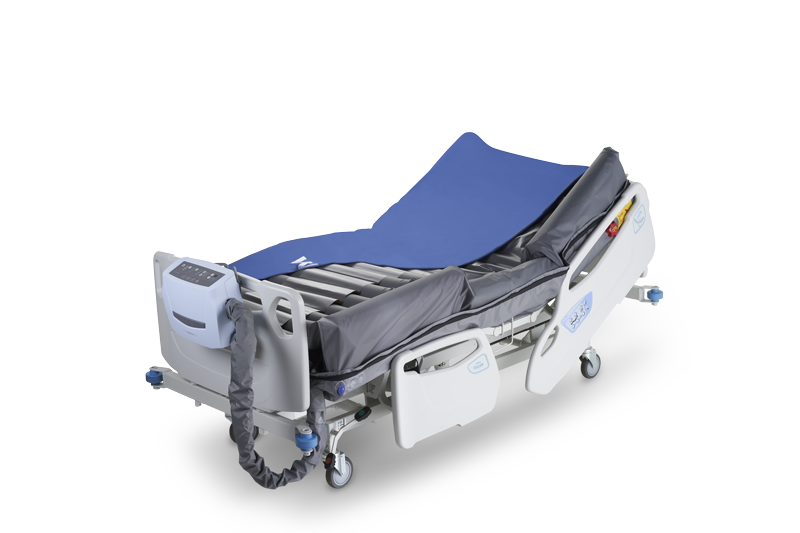Optima Auto
Alternating Pressure MattressFor High to Very High Risk
Pressure Injury Prevention Solution for Acute Care — Increasing skin activity and improving blood circulation with alternating pressure.
Abbreviations: PI, pressure injury; S/C I & II, Stage/Category I & II.
15% of hospitalized adults develop PI globally, with surgical and critical-care reporting the most cases. Over 50% are intact skin with redness (S/C I) or partial skin loss with pink wound (S/C II) in the sacrum, heels, and hips. PI significantly increases mortality and the risk of complications.1-3
Lying down/on or sitting for long periods accelerates PI development in vulnerable and high-risk patients. Lower trunk PI is common in immobile patients since skin wounds quickly develop into irreversible damage under intense tissue compression, increasing caregiving complexity.1,4
Optima Auto streamlines caregivers' workload and care delivery accuracy by automating pressure relief based on body distribution (head, torso, and lower leg) and skin temperature control (humidity, ventilation). It optimizes PI prevention and the protection of patients' skin integrity and function.

Prepared for intensive compression care
- Proprietary automatic pump optimizes mattress pressure settings to patients' weight distribution for fast pressure relief.
- Structurally reinforced air cells in the sacrum area improves structural support for comfy sitting and in-bed movements.
- Built-in battery (optional) ensures non-stop alternating pressure relief up to 6 hours for securing transportation or power failures.
- Visual interface with LCD simplifies controls, indicators, settings, and power functionalities for all levels of caregivers to use.
- A noise-sensitive pump ensures stressed patients and caregivers recover and work in a comfortable and safe environment.

Pump's auto-detection and initiation simplify caregivers' workflow in quickly providing optimal pressure relief care.

Sacrum area automatically inflates to optimal firmness once the head section of the mattress rises above 30°.

Continuous pressure relief care during transport ensures uninterrupted therapy outcomes and patient comfort.

Intuitive pump interface and low-noise levels allow caregivers to deliver care and comfort throughout the day consistently.
| Optima Auto | ||
|---|---|---|
| Mattress Dimension (L x W x H ) | 78.7 x 31.5-35.4 x 8 in | 2000 x 800-900 x 203 mm |
| Mattress Weight | 28.6 lb | 13 kg |
| Maximum Patient Weight | 550 lb | 250 kg |
| Pump Dimension (L x W x H ) | 13.4 x 6.5 x 10.2 in | 341 x 165 x 260 mm |
| Supply Voltage | 230 V / 50-60 Hz |
|

Prepared for intensive compression care
- Proprietary automatic pump optimizes mattress pressure settings to patients' weight distribution for fast pressure relief.
- Structurally reinforced air cells in the sacrum area improves structural support for comfy sitting and in-bed movements.
- Built-in battery (optional) ensures non-stop alternating pressure relief up to 6 hours for securing transportation or power failures.
- Visual interface with LCD simplifies controls, indicators, settings, and power functionalities for all levels of caregivers to use.
- A noise-sensitive pump ensures stressed patients and caregivers recover and work in a comfortable and safe environment.

Pump's auto-detection and initiation simplify caregivers' workflow in quickly providing optimal pressure relief care.

Sacrum area automatically inflates to optimal firmness once the head section of the mattress rises above 30°.

Continuous pressure relief care during transport ensures uninterrupted therapy outcomes and patient comfort.

Intuitive pump interface and low-noise levels allow caregivers to deliver care and comfort throughout the day consistently.
All air cells are made from Thermoplastic Polyurethanes (TPU). It is highly resistant to breaking down when in contact with water (hydrolysis), soft to touch, and minimizes friction and noise during patient movements.
Optima Auto's pressure relief solution divides into 3 zones: head, torso, and Lower leg. During care, each zone provides optimal pressure redistribution, immersion, and envelopment based on the weight of the body part, improving stability and comfort for patients of all body types.
Reference
- EPUAP/NPIAP/PPPIA. "Prevention and treatment of pressure ulcers/injuries: clinical practice guideline." European Pressure Ulcer Advisory Panel, National Pressure Ulcer Advisory Panel, Pan Pacific Pressure Injury Alliance (2019).
- Borojeny, L. A., Albatineh, A. N., Dehkordi, A. H., & Gheshlagh, R. G. (2020). The incidence of pressure ulcers and its associations in different wards of the hospital: a systematic review and meta-analysis. International Journal of Preventive Medicine, 11.
- Chen, H. L., Chen, X. Y., & Wu, J. (2012). The incidence of pressure ulcers in surgical patients of the last 5 years: a systematic review. Wounds: A Compendium of Clinical Research and Practice, 24(9), 234-241.
- Masterson, S., & Younger, C. (2014). Using an alternating pressure mattress to offload heels in ICU. British Journal of Nursing, 23(Sup15), S44-S49.








